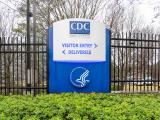Jan 30, 2007 (CIDRAP News) Dr. Anne Francis, a pediatrician in Rochester, N.Y., says her group practice typically has a few doses of influenza vaccine left at the end of the flu season. But as of last week, with the demand for vaccination nearly gone, the clinic still had 580 doses on hand.
The problem was that most of the vaccine didn't arrive until mid-November, more than a month later than usual, Francis said. "With the vaccine arriving so late, it was logistically impossible to get the same number of people [vaccinated] as if we had gotten the vaccine in, say, early October," she said. "Once January hit, there's been very little interest in getting flu vaccine."
Francis's situation apparently isn't unusual this year. A combination of record flu vaccine production with some distribution delays and a mild flu season has created a glut of unused flu vaccine this winter, a situation that could lead to problems next season, according to public health officials.
"There's significant concern that there's a lot of vaccine out there that hasn't been used," said Kristen Ehresmann, manager of immunization, tuberculosis, and international health at the Minnesota Department of Health in St. Paul. "It's definitely in the thousands of doses" in Minnesota. "And it'll be millions of unused doses at the national level."
"We recognize that there are many doses that are going unused at the moment," said Curtis Allen, a spokesman for the National Immunization Program at the Centers for Disease Control and Prevention (CDC) in Atlanta.
Health officials worry that if vaccine manufacturers can't sell all of their supply, they'll cut back production for next season, and if healthcare providers are stuck with unused doses, they'll order less as well. That could lead to fewer people getting vaccinated next yearand undercut the public health goal of increasing vaccine production capacity and demand in the interest of pandemic preparedness.
"Many decisions about production and ordering have to be made not only by providers but by manufacturers early in the year," said Allen. "The concern is that if we have millions of doses and they're not purchased, the manufacturers are going to have to look at how many doses they will produce next year. It's important not only for the seasonal flu, but that we continue to maintain capacity in the event of pandemic flu."
The oversupply comes after a record year for flu vaccine production. The CDC had estimated total production for the US market at 110 million to 115 million doses. Allen said manufacturers have told the CDC they had shipped 102.4 million doses by the end of Decemberwell above the previous record production of 95 million doses, set in 2002. (He didn't have information on how many doses have been produced but not sold.)
In 2002, about 83 million doses of vaccine were distributed, leaving manufacturers with 12 million doses they couldn't sell, according to Allen. The following year, 2003, producers cut back their output to 86.9 million doses.
Clinics struggled with delays
Last October, Sanofi Pasteur, the leading flu vaccine supplier for the US market, said a slow-growing strain of influenza A(H3N2) would cause distribution of its Fluzone vaccine to be about 3 weeks later than last year. Two other manufacturers, GlaxoSmithKline and Novartis, were also said to have had some problems growing that strain. The delays particularly affected pediatricians, because Fluzone is the only vaccine licensed in the United States for children aged 6 months to 3 years.
Francis said her clinic's doses typically arrive in late September or early October, "which gives us 2-1/2 months to distribute them to patients, including children," she said. But the delay this year left too little time to vaccinate people before demand evaporated.
"We always have a little vaccine left over at the end of the season, but I've never had in excess of 100 doses. This is really extreme for us," Francis said. "This vaccine can't be returned, and it costs over $100 for a 10-dose vial. So it's close to a $6,000 loss."
As a result, she has cut back her vaccine order for next season3,000 doses, instead of the 3,500 she had ordered for this year.
Another pediatrician, Jill Stoller, MD, of Woodcliff Lakes, N.J., said her group practice avoided having a lot of unused vaccine, but only because they canceled an order for 1,000 doses from Sanofi as soon as they heard about the delay. After canceling, they ordered 500 doses from Chiron (now part of Novartis), which they were able to get immediately. The group also bought 1,300 doses of FluMist, the nasal-spray vaccine from MedImmune.
Stoller was critical of Sanofi for not announcing the production problem earlier. "Sanofi was not making decisions based on public health, they were making decisions based on their shareholders," she said.
Stoller, who serves on the executive committee of the American Academy of Pedatrics' Section on Administration and Practice Management, says many pediatricians have been left with a lot of vaccine this winter. "I talk to people all the time, and I know there were offices with hundreds and hundreds of doses left," she said.
Few people are seeking a shot at this point, she added. "In the Northeast we're seeing very little flu, so it's not on people's minds."
Unused doses cause financial losses
In Minnesota, Ehresmann said many local health departments are reporting they have hundreds of doses of flu vaccine left. "Given the fact that we're into January, there's not a lot of confidence that the public will pursue that vaccine now," she said.
If health departments can't use the vaccine by the time it expires at the end of June, they have to dispose of it, she said. "It's a loss for the local health departmentsand there's no surge capacity in their budgets."
Local health departments administer flu shots in public immunization clinics, and some also channel doses to private providers as well, Ehresmann said. "The unused vaccine is happening to all vaccine providers whether public or private. . . . Both sectors are feeling the stress of the unused vaccineand the fiscal impact."
Like Francis, Ehresmann blamed the vaccine glut largely on the late arrival of much of the supply. "It's a matter of timing," she said. "The manufacturers weren't getting the product to providers until very latein November. There's a fairly narrow window of opportunity with the consumer for flu vaccination."
Other states also are seeing signs of a vaccine glut, though officials were not as emphatic as Ehresmann.
"I can tell you that anecdotally I've been receiving calls from public health departments that they have doses on hand they're willing to sell to folks or give to folks if needed," said Roberta Smith, who heads the adult immunization program for the Colorado Department of Public Health and Environment. "Those range from a few hundred to 3,000 [doses]."
"I think the demand has definitely waned," Smith added. "We're currently having a mild flu season, with 34 confirmed cases so far. We're trying to keep the momentum going for immunization, but it's sometimes hard to get the community motivated. . . . There are some people still seeking immunization, but the vast majority have given up."
Smith said she was unsure to what extent late vaccine shipments were to blame for the current oversupply. "I had some providers who called in August and had vaccine, but there were also providers who didn't get theirs till the end of November, beginning of December," she said.
In Texas, Emily Palmer, an assistant press officer with the Department of State Health Services in Austin, said, "Anecdotally we've heard of a couple local health departments that are offering the vaccine for free. We also have heard that some areas are looking for preservative-free vaccine and they haven't been able to find any."
Palmer said a combination of mild weather and relatively few flu cases has probably suppressed demand for vaccination.
Distribution timing
Figures provided by Allen of the CDC show a somewhat slower flow of vaccine from manufacturers this season than in previous seasons. In 2006, according to manufacturers' reports to the CDC, they shipped no doses in August, 24.9 million in September, 44.9 million in October, 30.2 million in November, and 2.3 million in December.
Translated into percentages, that means that 24.3% of the total for the year (through December) were shipped by the end of September and 68.2% were shipped by the end of October. The corresponding figures for previous years were as follows: 2005, 34.7% and 72.8%; 2004 (when close to half of the US supply was lost because of problems at a Chiron plant in England), 31% and 74.6%; 2003, 58% and 92.5%; and 2002, 61% and 99.6%.
It's also worth noting that several million doses were shipped in August in each of the previous 7 years, whereas none were shipped in August 2006, according to the CDC data. August numbers for the earlier years ranged from 2.7 million in 2001 to 19.6 million in 1999.
Manufacturers mum on unsold doses
Flu vaccine manufacturers contacted by CIDRAP News wouldn't reveal how many doses remain unsold, but one, GlaxoSmithKline (GSK), acknowledged having a "substantial" number.
Jennifer Armstrong, a GSK spokeswoman in Philadelphia, said the company made a total of about 25 million doses of its two flu vaccines, Fluarix and Flulaval, for the US market this season.
"I don't have specifics, but we still have a substantial number of vaccines [doses] available," she said.
The company began shipping Fluarix in early September and Flulaval immediately after it was approved for the United States on Oct 5, Armstrong said. Most doses were out the door by the end of November, with a few delivered in December.
Sanofi Pasteur made somewhat more than the 50 million doses it expected to produce for this season, said spokeswoman Patty Tomsky, but she couldn't give a production total or say how many doses have not been sold. "The season isn't over and we're still selling, so I can't give a final number yet," she said.
The company used a "multiphase" distribution strategy, meaning all customers received part of their order by the end of September, she said. "The remainder of the order was shipped through October and November and sometimes early December, but most received it in October and November."
Tomsky declined to comment specifically on Stoller's complaint that Sanofi was slow to report the problem with the slow-growing vaccine strain, but said, "We've been careful to project our demand and our production in a way that supports public health and meets customer needs."
She also noted that Sanofi is increasing its vaccine production capacity, with work under way on a new manufacturing plant and a formulation and filling facility. "Once we get both of those online, we expect our capacity to double," she said.
Karen Lancaster, a MedImmune spokeswoman, said her company made 3 million doses of FluMist for this season. "We began shipping in July, and all doses were released for distribution by the FDA [Food and Drug Administration] the end of September," she reported.
None of the companies was prepared to talk about how many doses they expect to make for 2007-08 or how many their customers are ordering.
Educating the public
Public health agencies have been trying for years to convince the public that October and November are not the only months for flu vaccination. They point out that the vaccine doesn't materialize all at once, but "comes out like water out of a hose," in Allen's words. This season the CDC promoted the week after Thanksgiving as "National Influenza Vaccination Week" in an effort to boost December vaccinations.
"Our consistent message has been that vaccination into January and even into February most years is still very good advice," he said. "In most years the season peaks in February or later. But we're going up against history. In the past most people have received their vaccinations in November."
Smith, the Colorado immunization coordinator, echoed the idea that education is part of the answer to the recurring problems in matching flu vaccine supply to the demand. "We do need to let people know that 100 million doses don't come out on one day, that there has to be staggered distribution," she said. "When we were producing much smaller amounts [in the past], it was easy to get it all out. With this amount there has to be staggered distribution."
She expressed concern that flu vaccine providers will be "reconsidering" their orders in view of the current oversupply. But the situation isn't all bad, in her view.
"The good news is that this year [the amount] is the most vaccine we've ever had in our history, so we know what our capacity is. It's refreshing that we know we have that capability," she said.
See also:
CDC influenza site
http://www.cdc.gov/flu/
Oct 17, 2006, CIDRAP News story "Flu vaccine delay affects toddlers"



















